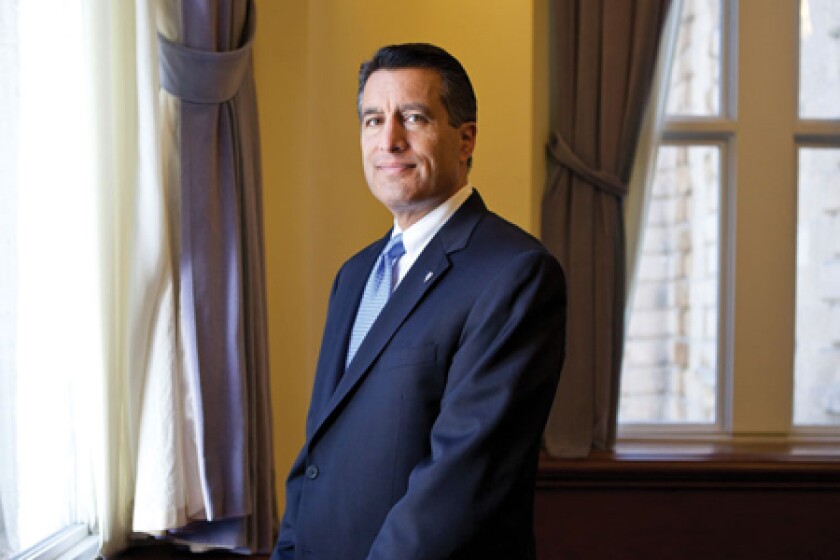
Robert Durell

When Brian Sandoval won the Nevada governor’s race in November 2010, his state was in shambles. It had the nation’s highest unemployment rate, a crushed housing market and a looming $3 billion budget deficit. Public faith in the state’s government was at an all-time low. Sandoval’s predecessor, Jim Gibbons, had served a controversial and tumultuous term that saw his approval rating dip as low as 10 percent.
So, after leaving a lifetime appointment as a federal judge to return to the perils of elected office (he was a state legislator from 1994 to 1998), Sandoval went to work. And in an era of hyper-partisanship, the Republican governor forged a compromise to close the state’s massive budget hole with a Democratic Legislature. He relented on a campaign pledge not to raise taxes and agreed to extend sunsetting taxes on mining companies, a $620 million boon to state coffers. In return, Democratic leaders signed off on spending cuts, as well as education reforms that were on the governor’s to-do list: reforming teacher tenure and instituting performance pay for teachers.
“We may not have agreed all the time, but we had a very good relationship. So when it came down to crunch time, we were able to get things done,” Sandoval says. “I think it’s really important to listen to everyone and to see what their goals are. I think it paid dividends in the end.”
Indeed, the atmosphere in Carson City is noticeably different. Upon taking office 22 months ago, Sandoval went out of his way to personally meet with all 63 legislators so he could learn about their priorities for the state. The previous administration had developed a reputation for being uninterested, even lazy. “He’s been much more engaged in the process, and that makes a difference if you’re going to work together,” says state Sen. Mo Denis, the Democratic caucus leader. “We’re able to sit down and talk, even though we don’t always agree. That’s an important part of trying to figure out solutions.”
In February, on the back of the previous year’s bipartisan legislation, the governor introduced a two-year economic development plan that pledges to create 50,000 new jobs by 2014 and diversify the state’s economy. The plan has already enticed Apple to the state, which plans to build a $400 million data center near Reno. The company also pledged to invest another $1 billion in Nevada over the next decade.
From July 2011 to July 2012, the state had the biggest drop in unemployment among the 50 states. New home sales are up, and housing prices are slowly recovering. The latest poll numbers place Sandoval’s approval rating above 60 percent, one of the highest marks in the nation.
“You often see this in swing states with mixed government. People have to make compromises to move forward,” says University of Nevada, Las Vegas political science professor David Damore. “He has that personal touch. He’s optimistic. For Nevada, that’s a major change.”
By Dylan Scott








